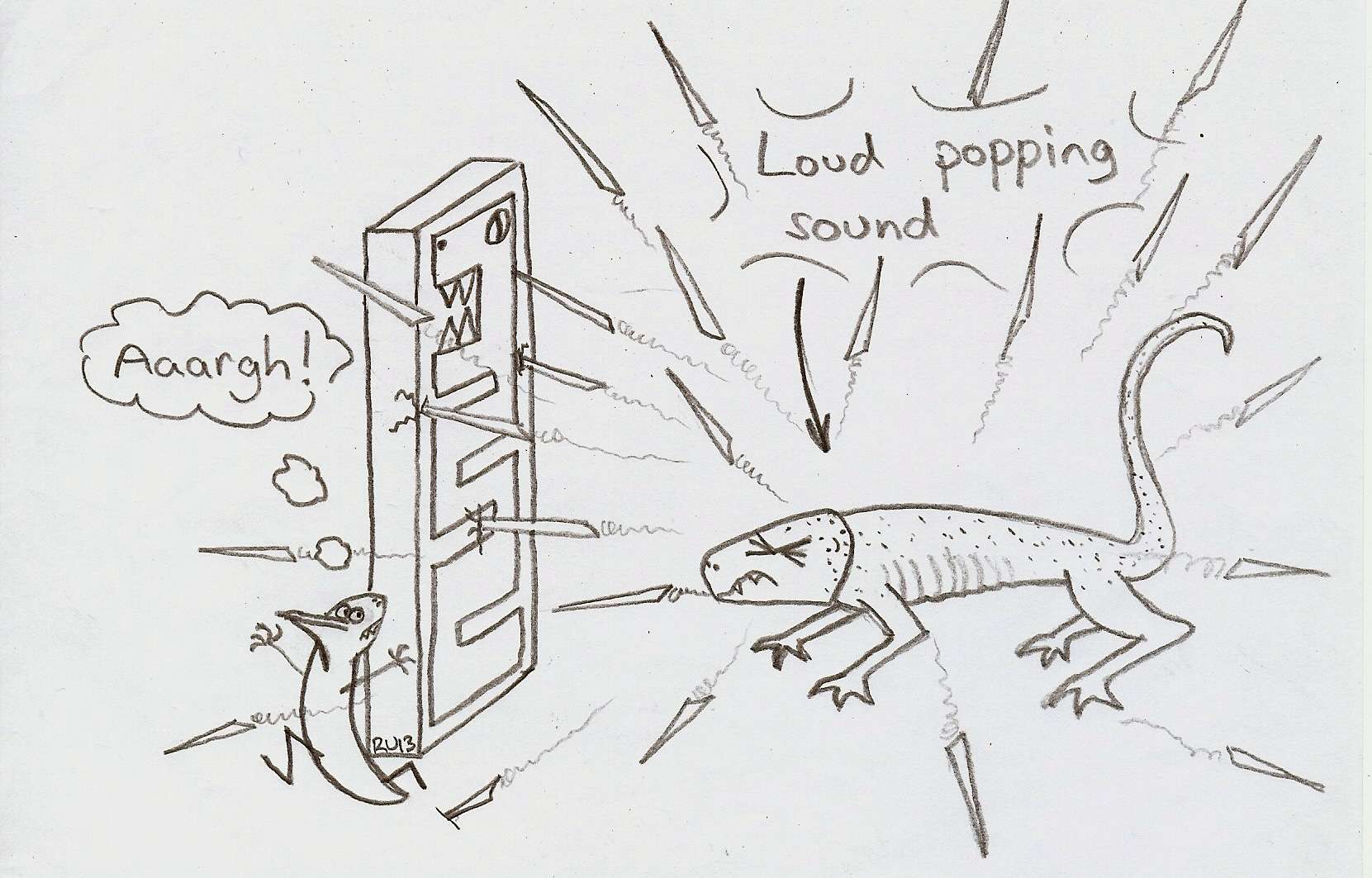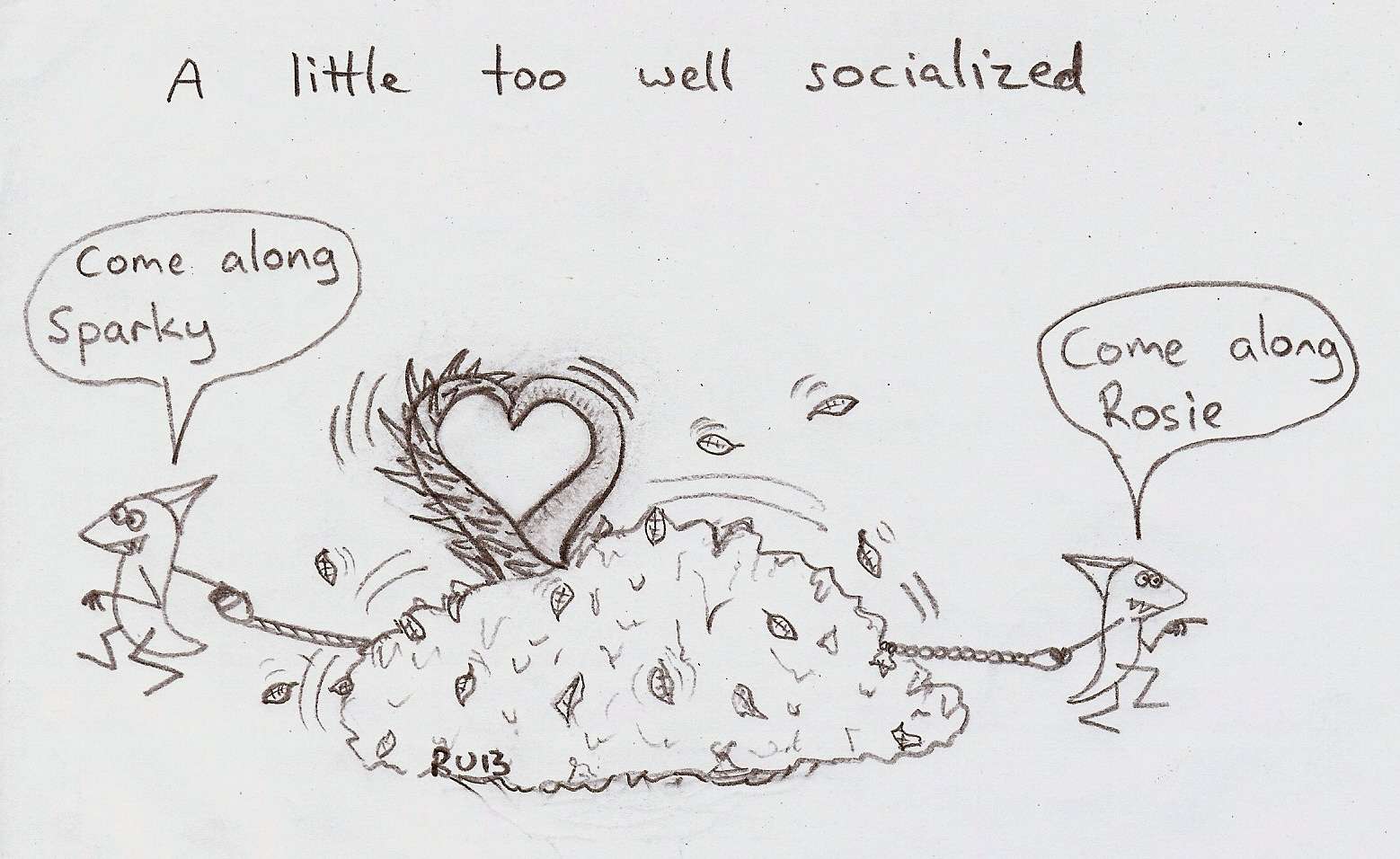There is no finer sight on the Lustrian Battlefield than the well drilled perfection of the Salamander or Barbed Razordon hunting pack. Each member of the team has a unique and vital role.
Congratulations on your decision to become the handler of one (or more*) of Lustria's magnificent war beasts. This, the fourth of Spawning of Bob's illustrated guides, will assist you in reaching your full potential as a war beast handler.
Although the Fire Salamander (salamandra ignis) and its cousin, the Barbed Razordon (novacula dentatus uncinatus) are from 2 separate genera, many principles of care are common to both species.
Acquiring your pet
The most common means of acquisition of eggs is to take them from attended** or unattended nests. This sounds simple, but in Lustria care must be taken to ensure that you have selected from the appropriate nest. Many a would-be handler has been disappointed when weeks of careful incubation have ended in an unexpected arrival.
Large scale domestic breeding programmes*** have met with limited success and tend to end in tears. Or flames.
Hybrids and fancy breeds such as the Plumed Featherdon (cristatus pinna) are more favoured as ornamental or show animals, although war beast handlers have been known to occasionally employ them in combat****.
Naming your pet
Anything with an apostrophe in it should be fine.
Basic Care
Both Salamanders and Razordons are robust and assertive animals which makes for relatively simple basic care. They are natural foragers immediately after hatching, therefore they are inexpensive to feed. However, the unfortunate discovery of a "trophy" on the doorstep from time to time does deter some potential owners.
Once the animals are larger, they can continue to forage within the bounds of the Temple City***** or else you can encourage them to forage outside the urban area in order to minimise disruption to city life.
Grooming, care for nails and the animal's coat are essential for both a happy pet and owner. A poorly groomed and clipped animal can be a liability on the battle field.
A word of caution for barbed razordon owners: The spring moult can be a challenging time for both you and your pet.
Socialisation
As part of their training your pet should be gradually introduced to other beasts and monsters. The ultimate goal is to have them interacting calmly with all other elements of the Lizardmen army.
Training
The size and assertiveness of the salamander and razordon do make them challenging animals to train, but with perseverance, access to medical facilities and modern training approaches their natural free spiritedness can be subdued.
They can be taught simple tricks such as "fetch", "beg", "move and fire", "spout flames" (salamander only), and "stand and shoot" (razordon only).
Summary
If you follow these guidelines carefully you will soon be able to commence training with other hunting pack members, join the ranks of the magnificent Lizardmen army and you will have developed a rewarding and lifelong bond with your new pet.
If you don't follow these guidelines****** you have two other options:
1. Apply firm compression to the wound. Do not try to remove any penetrating objects.
2. Bathe the area in cool running water for at least 20 minutes
* not recommended
** not recommended
***not recommended
**** not recommended
***** not recommended
****** not recommended















No comments:
Post a Comment